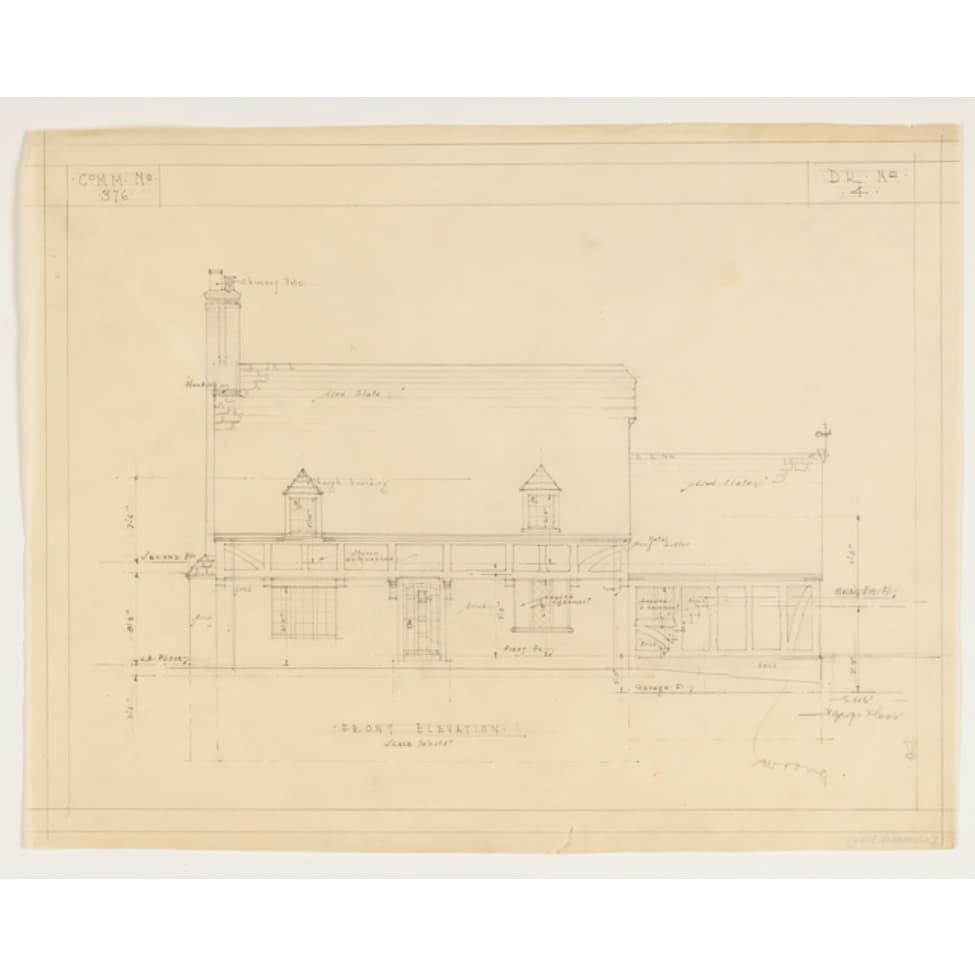“Tudor Revival” is an architectural misnomer. It is a hodgepodge of aesthetic elements borrowed from English building styles ranging from the Middle Ages to the Jacobean era, featuring a combination of brick and stucco, often adorned with half-timbers and diamond-paned casement windows. If you look at a house and the words “Ye Olde” come to mind, chances are that you are looking at Tudor Revival construction.
In Melrose the style is mainly limited to one neighborhood, and that is the area just west of Bellevue Country Club. Several of these streets were built up in the 1930s by Melrose contractor Chester S. Patten, who gave his development the evocative name of “Moorlands,” itself reminiscent of an English period drama.
Patten worked with several architects, but his favorite partner was Royal Barry Wills. Wills designed the delightfully fanciful 26 Marmion Road, featuring a stucco second story with extensive half-timbering. Both the glass in the casement windows and the tiles of the slate roof have been deliberately discolored to give the house an artificially antique look. Vergeboards and finials on the two decorative gables give the house a Gothic flair.
Around the corner at 109 Country Club Road, Wills designed a Tudor where the half-timbering was far more restrained, acting as a border between the red brick of the façade and the multi-colored light greys of the overhanging slate roof. The chimney pots and the rough boarding in the dormers give the house rusticated touches, but its appearance altogether is unquestionably modern.
In contrast, our final Wills design, 90 Larchmont Road, looks convincingly like a Tudor cottage transported to America, from its massive central chimney stack to the artfully misshapen clapboarding on its gable ends. Wills placed the garage behind the mass of the house, hiding all signs of technology from casual passersby on Larchmont.
At the time when these houses were built, American capitalism seemed on the brink of collapse, and the world was teetering towards war. For those who could afford it, a Tudor Revival house offered an architectural escape to a peaceful, pastoral past—but with all of the modern conveniences.








No comments:
Post a Comment